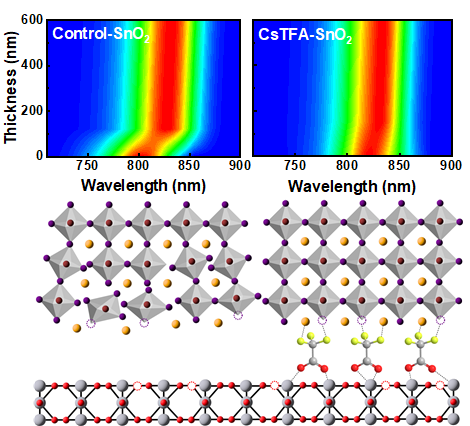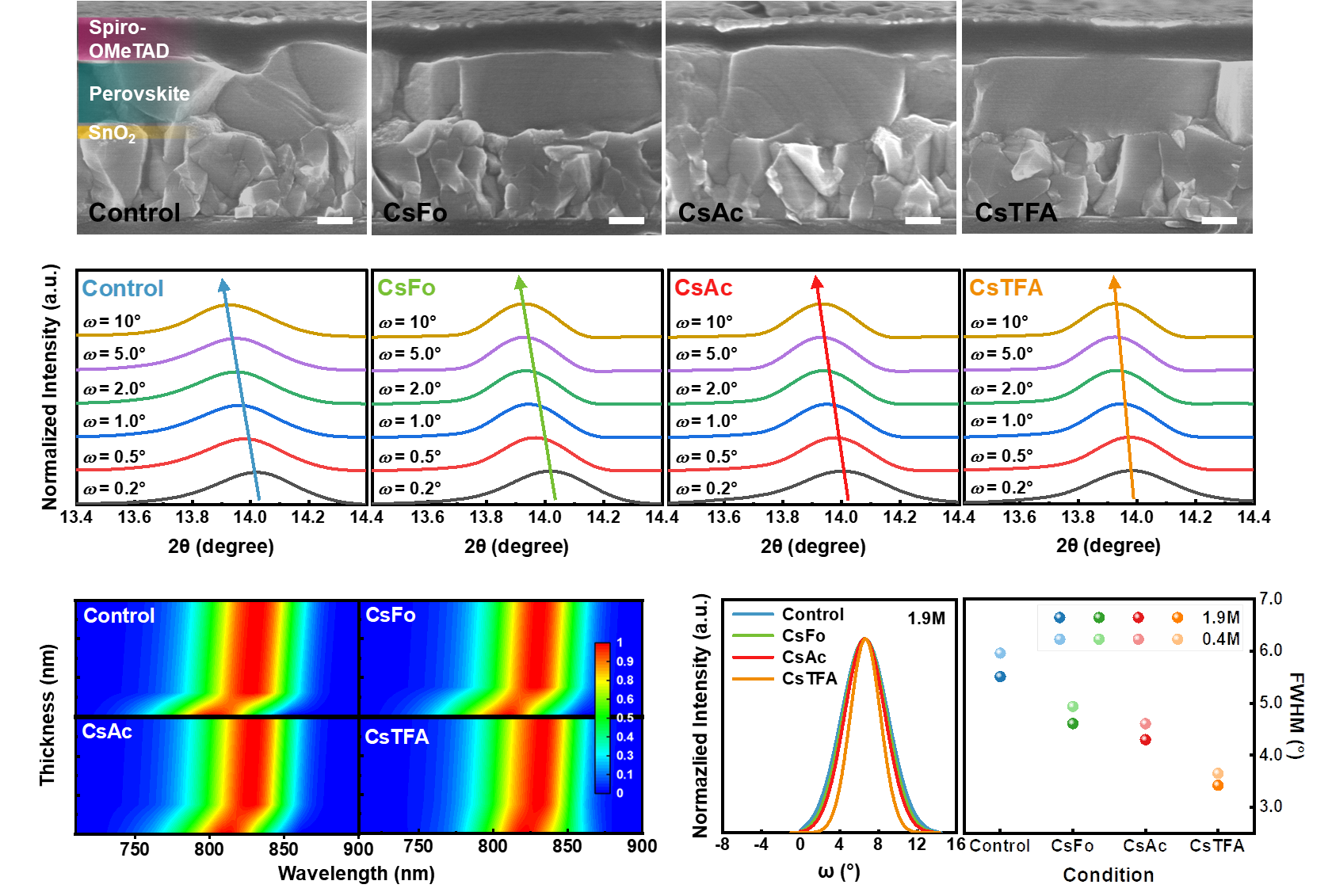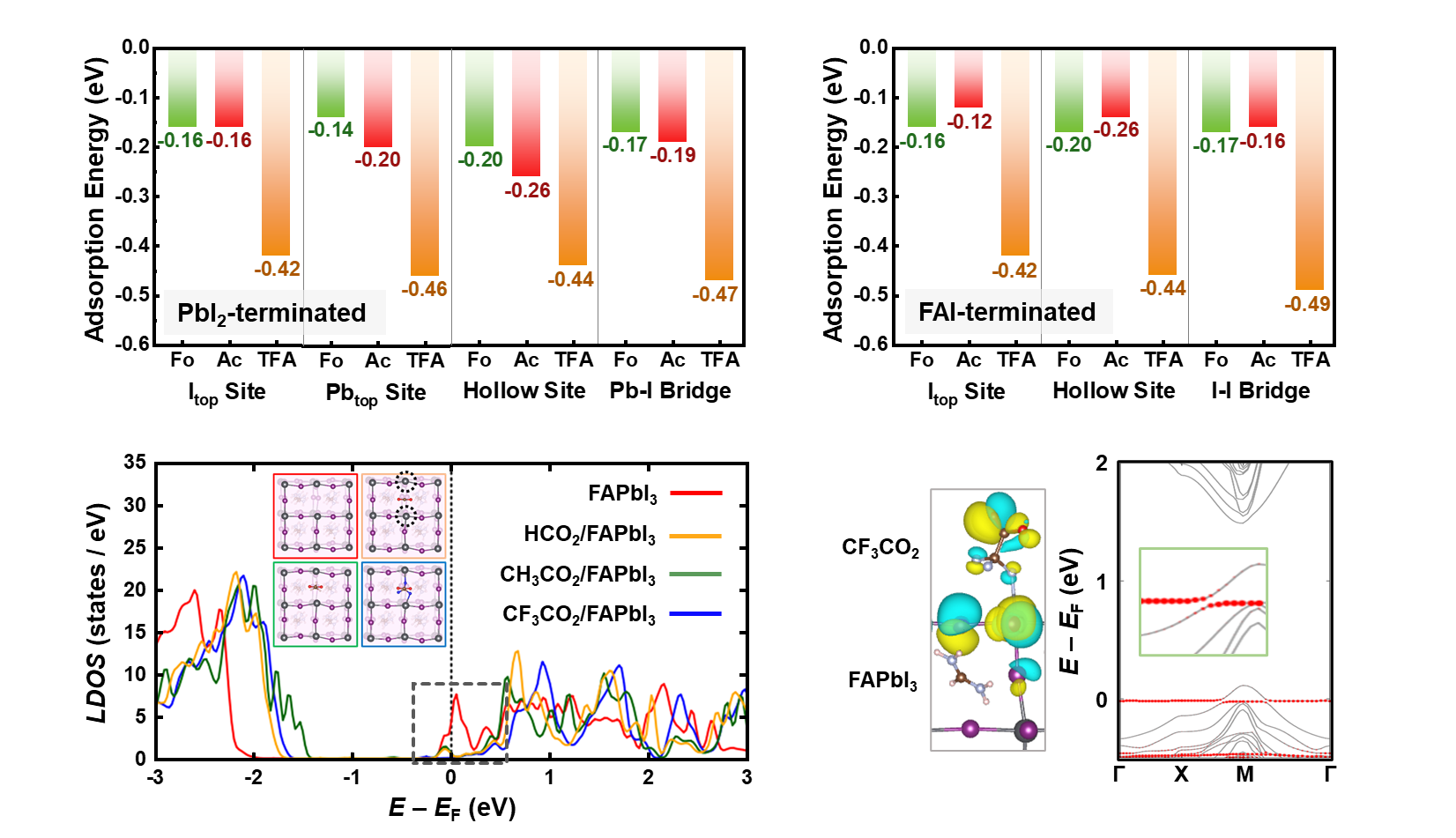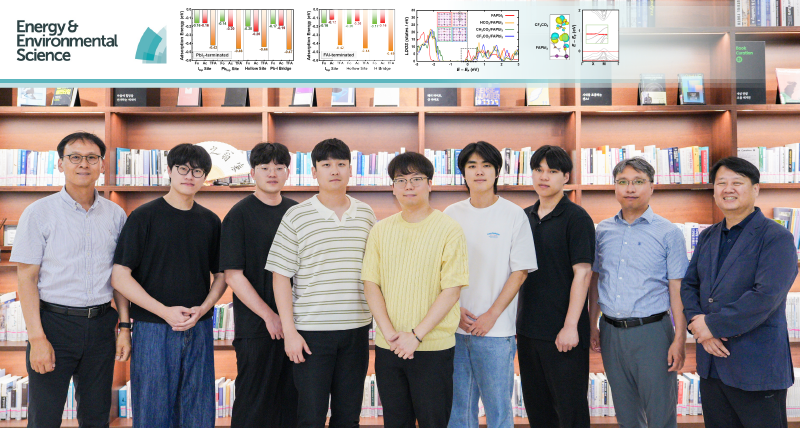A joint research team from the School of Energy and Chemical Engineering and the Department of Chemistry at UNIST has addressed critical challenges in perovskite solar cells (PSCs), significantly enhancing both their efficiency and stability, which is expected to further bolster their commercialization potential.
Led by Professors Jin Young Kim, Dong Suk Kim, and Geunsik Lee, the team successfully achieved precise control over ion arrangement and reduced structural irregularities by incorporating a bidirectional coordinator between the perovskite photoactive layer and the electron transport layer.
 Figure 1. Overall schematic illustration of the study.
Figure 1. Overall schematic illustration of the study.
Despite their high efficiency and low manufacturing costs, perovskite solar cells have faced obstacles to commercialization due to various defect-related issues. The research team introduced trifluoroacetate (TFA-) ions between the perovskite layer and the tin oxide substrate, which serves as the electron transport layer (ETL), to mitigate these defects.

Figure 2. (a) Cross-sectional SEM images of the perovskite films deposited on the control- and CsX-treated SnO2, configured as FTO/control- and CsX-treated SnO2/Perovskite/Spiro-OMeTAD. (b) GIXRD spectra of the perovskite films deposited on the control- and CsX-treated SnO2 upon varying the grazing incidence angle from 0.2° to 10°. (c) Normalized PL spectra upon varying the thickness of the perovskite films deposited on the control- and CsX-treated SnO2. (d) XRD rocking curves of the perovskite films deposited on the control- and CsX-treated SnO2 (left). FWHM values of XRD rocking curves of perovskite films with different concentrations, 0.4 M and 1.9 M, deposited on the control- and CsX-treated SnO2 (right).
The carboxylate group (-COO-) of TFA- firmly bonds with the tin oxide, enhancing structural stability. Simultaneously, the organic head group (-CF3) effectively reduces defects through bidirectional molecular tuning that interacts with the perovskite layer.
 Figure 3. Density functional theory calculation results.
Figure 3. Density functional theory calculation results.
This approach allowed the research team to control the irregular structure of the perovskite thin film, substantially improving charge carrier mobility. The resulting perovskite films, characterized by the absence of buried interfaces and minimized tensile strain, achieved a remarkable power conversion efficiency (PCE) of 25.60%. Moreover, the unencapsulated device maintained over 80% of its initial PCE even under prolonged light exposure after 1000 hours.
Professor Dong Suk Kim remarked, “This groundbreaking bidirectional coordination strategy reveals a promising pathway to enhance high efficiency and confront the persistent challenge of addressing long-term stability concerns.” He added, “This achievement will further enhance the commercialization potential of PSCs.”
This study has been jointly participated by Jaehwi Lee, Dr. Yun Seop Shin, and Dr. Elham Oleiki, as the first author. It has been supported by the Ministry of Science and ICT (MSIT) and the National Research Foundation of Korea (NRF). Their findings have been published in the online version of Energy & Environmental Science in July 2024.
Journal Reference
Jaehwi Lee, Yun Seop Shin, Elham Oleiki, et al., “Constructing orderly crystal orientation with a bidirectional coordinator for high efficiency and stable perovskite solar cells,” (2024).












